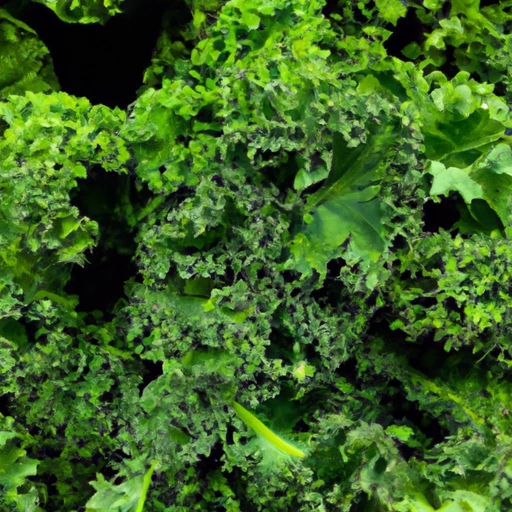Kale
Description

Kale, a member of the cabbage family, is a leafy green vegetable that is renowned for its nutritional prowess and versatility in cooking. With its ruffled leaves that range in color from dark green to purple, kale is not only a visual addition to meals but also a boost to health. As a robust ingredient in any kitchen, kale can be found fresh, frozen, or even as kale chips, catering to a variety of dietary preferences and culinary techniques.
Common uses
Commonly used in salads, smoothies, and as a cooked side dish, kale is adaptable to various culinary practices. Its slightly bitter flavor and sturdy texture make it a favorite ingredient in a healthy eating regimen.
Nutritional value
Calories
A cup of raw kale (about 67 grams or 2.4 ounces) provides approximately 33 calories.
Protein
Kale offers about 2.9 grams of protein per cup.
Fat
This leafy green contains a minimal amount of fat, with roughly 0.6 grams per cup.
Carbohydrates
Kale contains about 6 grams of carbohydrates per cup, which includes a mix of dietary fiber and sugars.
Vitamins
Kale is particularly high in vitamin K, offering over 600% of the Daily Value in a one-cup serving. It's also rich in vitamin A, vitamin C, and contains significant amounts of the B vitamins.
Minerals
The vegetable is a good source of minerals such as calcium, potassium, magnesium, and iron.
Health benefits
Kale is known for its health benefits, which include aiding in digestion, supporting heart health, and contributing to strong bones. The high amount of antioxidants found in kale can also help reduce oxidative stress and may lower the risk of chronic diseases.
Potential risks
For individuals on blood-thinning medications, the high vitamin K content in kale may interfere with the drugs' effectiveness. It's also possible for kale to contain heavy metals or pesticide residues if not properly washed or sourced from organic farms.
Common recipes
Kale can be used in a variety of recipes, including kale Caesar salads, kale chips, sautéed kale, kale smoothies, soups, and stews.
Cooking methods
Kale can be enjoyed raw, steamed, sautéed, boiled, baked, or blended. It's a versatile green that retains most of its nutrients regardless of the cooking method.
Pairing with other ingredients
Kale pairs well with strong flavors such as garlic, onions, and chili, as well as with acidic ingredients like lemon juice or vinegar to balance its bitterness. It also complements creamy elements such as avocado or cheese.
Summary
Kale is a nutritious and versatile green that has been enjoyed for centuries. With its rich nutrient profile and flexible culinary applications, kale is a valuable ingredient for those looking to enrich their diet with healthy, flavorful options.